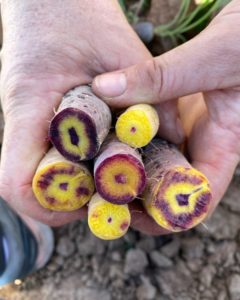
This year marks the beginning of the final four-year OREI grant funding cycle for our Carrot Improvement for Organic Agriculture (CIOA) project. We kicked off the year as we always do with a favorite “work vacation” as our Pacific Northwest Research and Education Team like to call it, to the winter carrot nursery at University of California Desert Research Station in El Centro, California to harvest and evaluate thousands of carrots. Even though we’ve been going for nearly a decade, this week of carrot harvesting never fails to unearth new and exciting roots that pique our interests and imaginations.
We’re particularly excited about some breeding populations that we have been working on and others just coming into being that we are continuing to learn about, develop, and share with other breeders and seed companies. One of the primary goals of this four-year cycle of CIOA is to develop and share breeding populations that have combinations of priority agronomic and market traits such as vigorous tops that can compete with weeds and are strong enough for easy bunching, visual appeal and excellent fresh eating quality (sweet, crisp, and carroty), and resistance to nematode, black crown (Alternaria dauci), and cavity spot damage. We are working on breeding populations of rainbow, orange, yellow, red, and purple carrots.
When you buy a packet of ‘Rainbow’ carrots it’s actually a seed mix rather than a variety that produces multi-colored roots. This means that the seeds of several different colored varieties that have similar shapes and maturity have been mixed together to create a “rainbow” variety. One of the goals for the next four years of the CIOA project is to create a rainbow variety that is itself a rainbow population – a single variety that produces roots across a spectrum of colors and color combinations. We currently have two populations in development that meet this goal and are excited to keep learning how to develop them into reliable and predictable varieties.
Cracking the Carrot Color Code
One of the interesting and challenging aspects of developing a rainbow variety is figuring out how all of the colors interact with each other, and which colors are dominant and which are less likely to show up without some help. For instance, purple and yellow are dominant colors in carrots and orange is not. This means that if a purple or a yellow carrot cross-pollinates with an orange carrot, the carrots produced from that seed would be yellow or purple and not orange. So, in striving to create a rainbow variety that consistently produces a range of colored carrots, we need to figure out how many or what percentage of the carrots we use to produce seed and create the population and variety should be yellow, purple, orange, red, and/or white. And of course, it’s not that simple or straightforward since the external color and the internal color can be different and combine in different and interesting ways. Also, sometimes one color isn’t entirely dominant to another so you end up with a carrot that may be dark purple at the top and yellow or orange at the tip. That’s what makes this so exciting and interesting – we are learning how the carrot colors interact by watching what comes out of it when we plant multiple colors together. At this point, three years into working with our rainbow population ‘Fantasia’, we are excited to learn more about how to proportion the various colors and see what happens as we figure out how to stabilize the population enough that it will produce reliably and also continue to produce amazing, vibrant, and delightfully colorful and tasty roots.
Right now is also a fantastic and exciting time to share ‘Fantasia’, as there is so much diversity in the population that any number of varieties could be selected and created out of the array of colorful carrots. For instance, it is possible to select all of the purple carrots out of the population and allow them to produce seed together and then make selections over several of years to arrive at a new purple carrot. The genetic diversity in ‘Fantasia’ also lends it the flexibility and potential to adapt to any number of growing environments. Our hope is to share ‘Fantasia’ and our other breeding populations far and wide with other carrot enthusiasts to spread the carrot love and the joy of working with a beautiful and nutritious vegetable.
Carrot Webinar Recording
If you are interested in learning more about carrot breeding and seed production take some time to check out the resources available in OSA’s resource library, including this recording of our Breeding Carrots for Production, Resilience, Flavor, and Fun in Organic Systems webinar from March 25, 2022.
Presenters cover basic genetics, color expression, trait expression and selection, and demonstrate how to cut, evaluate, and select roots from a diverse array of orange and rainbow colored roots. Specific topics include:
- Which traits are straightforward to select for and which are not (more complex)
- Strategies to tease out environmental effects from genetic expression
- Basic color genetics – which colors are dominant and “easy to fix and work with” and which are more challenging
- When to stop – traits that are very difficult or “impossible” to select out or away from
- A word about male sterility – how it works in carrots (it’s naturally occurring) and what to do if, or when, it shows up
- Root evaluation, selection, and storage
Presenters include OSA’s Laurie McKenzie and Micaela Colley, Philipp Simon from USDA ARS, and Solveig Hanson from the University of British Columbia.
Photo Gallery: El Centro Carrot Harvest, 2022
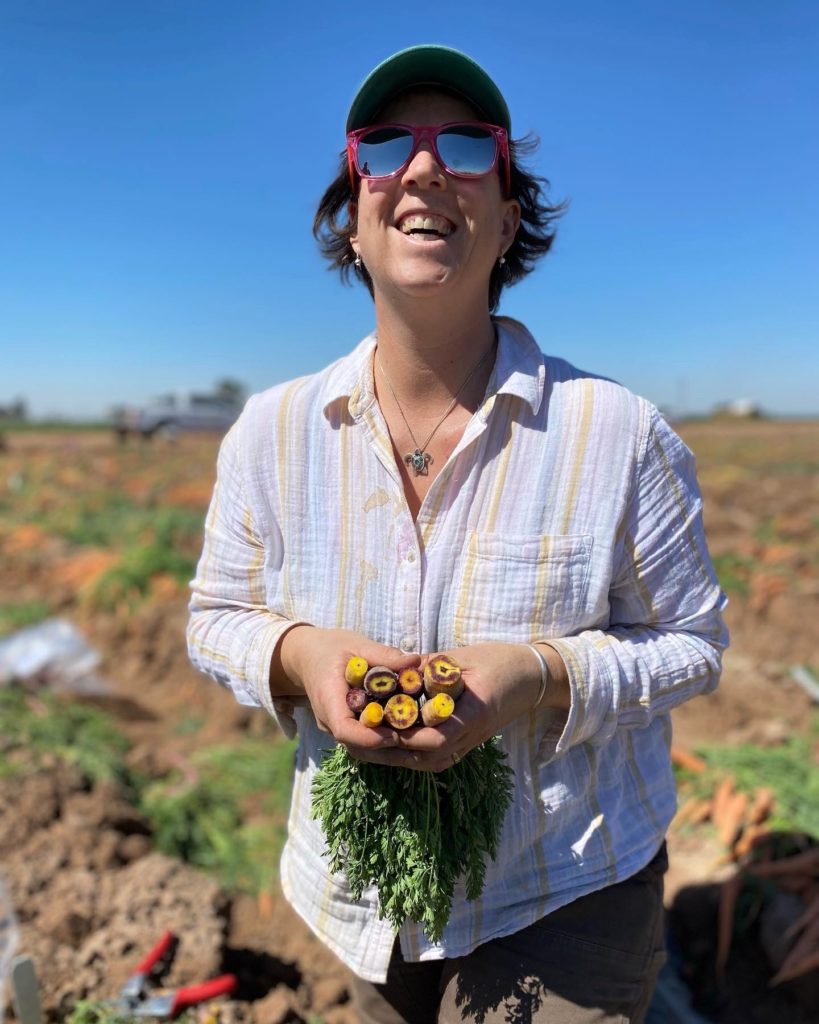
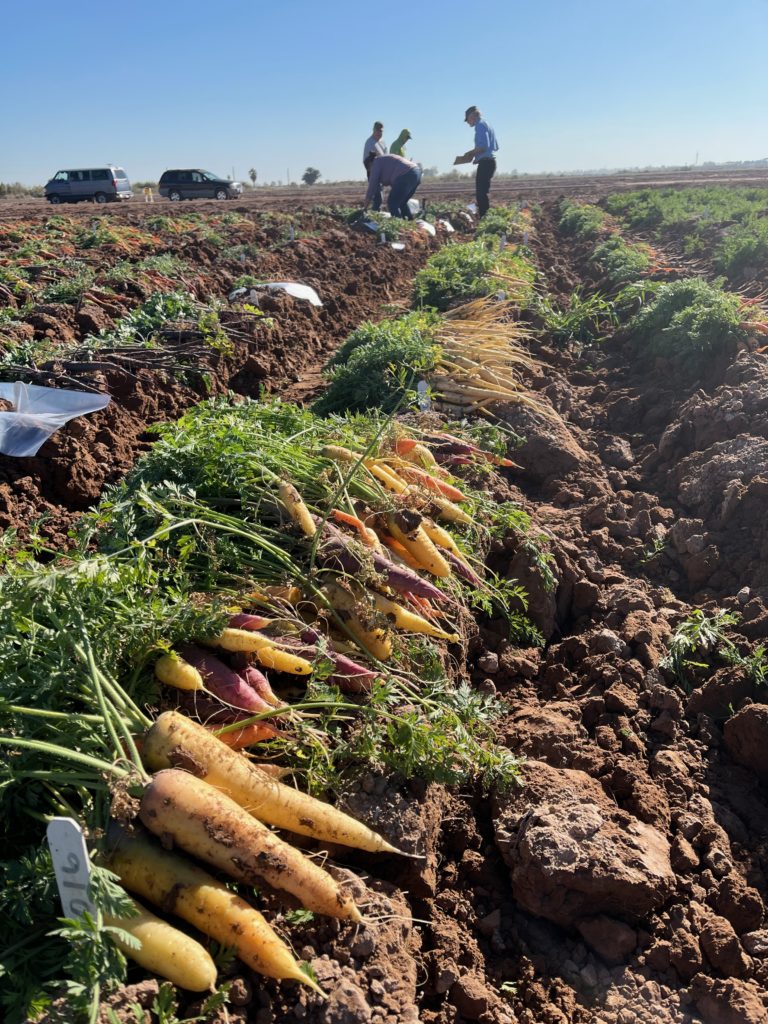
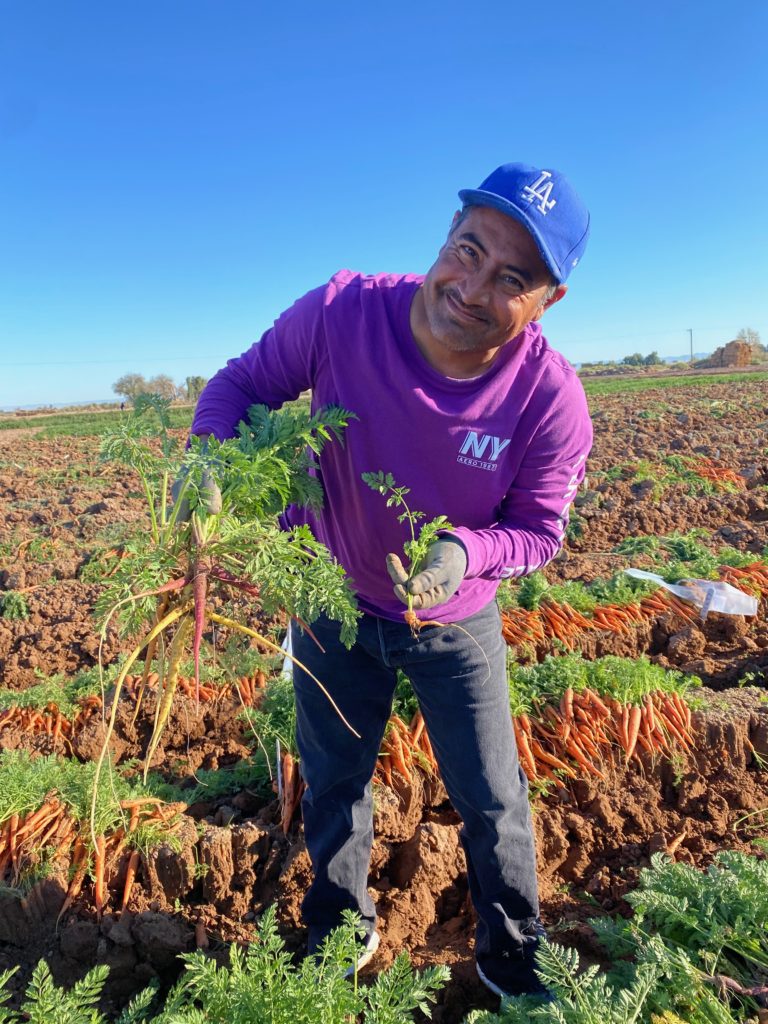
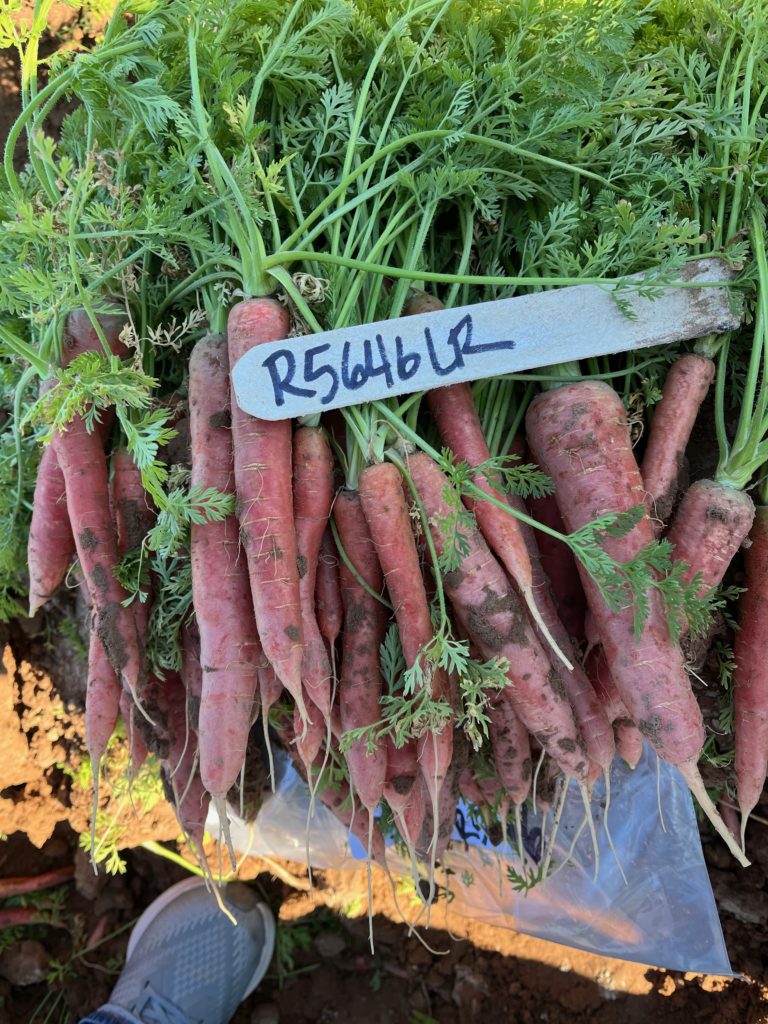
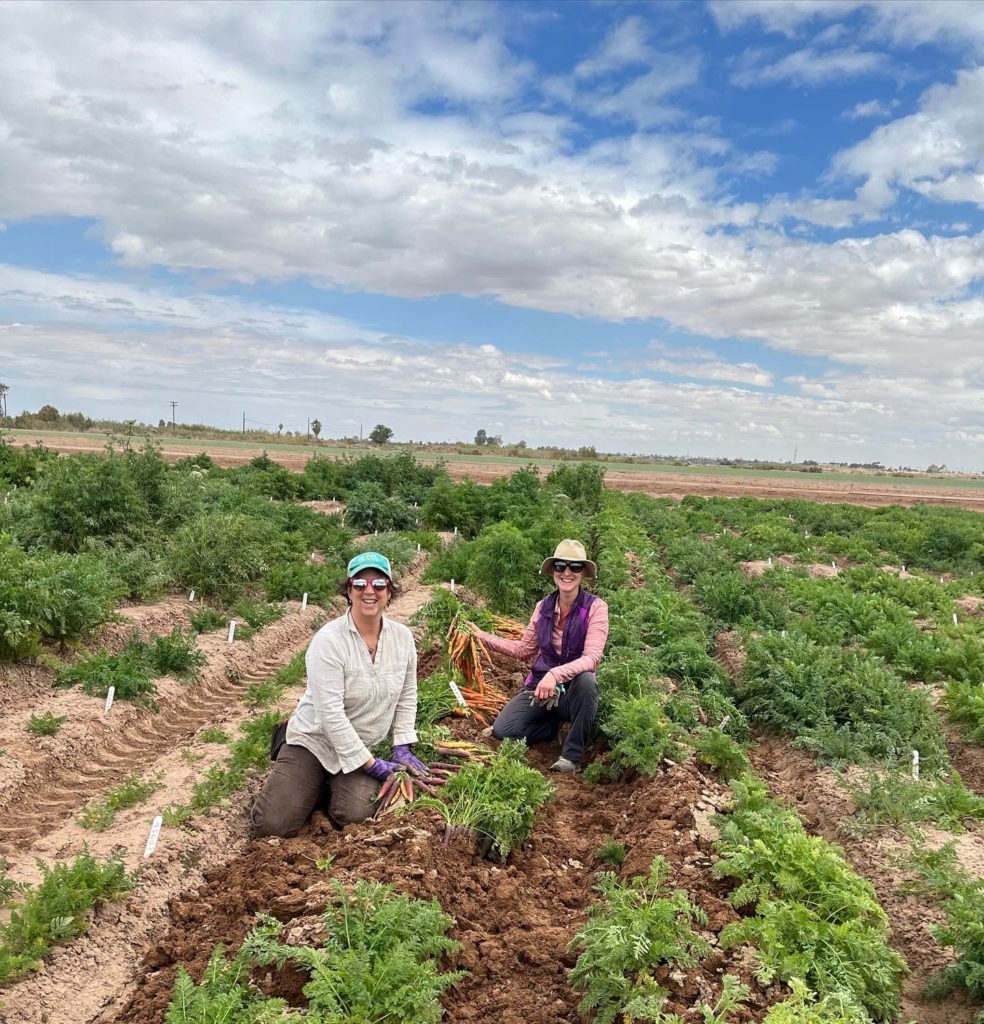
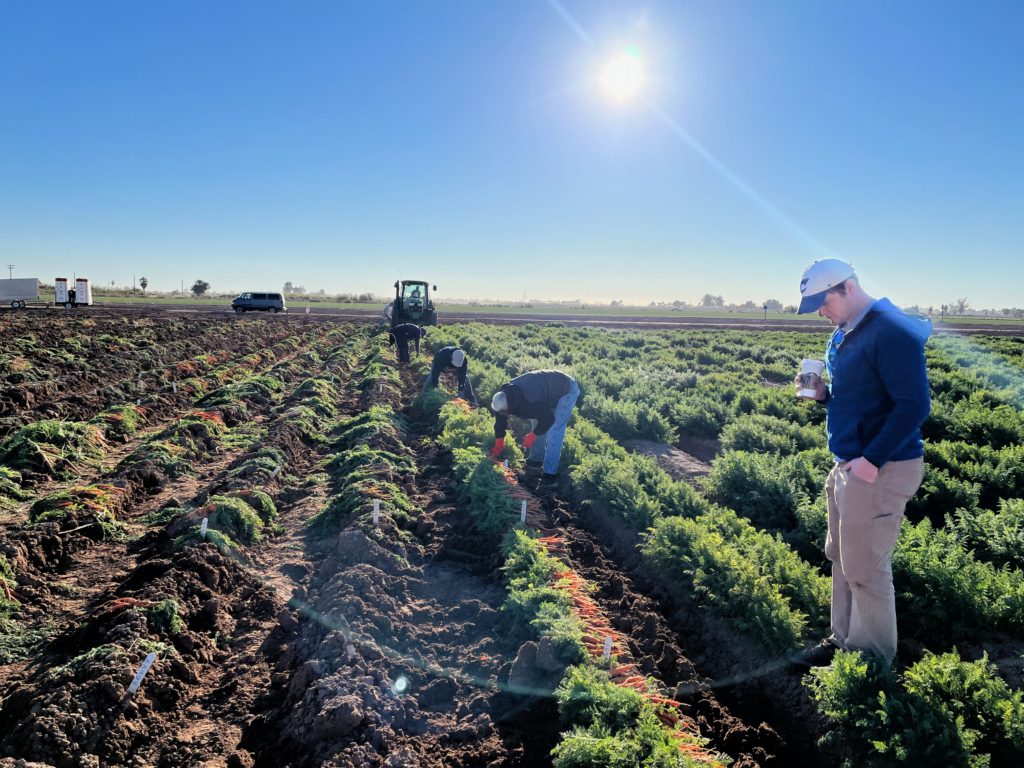
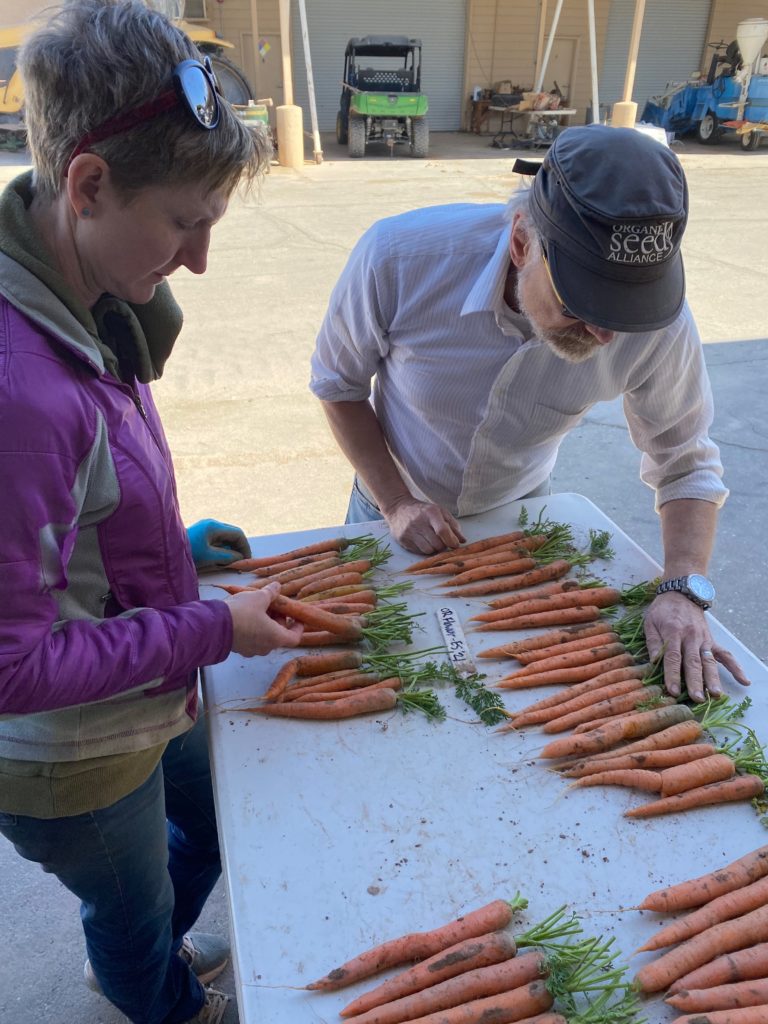
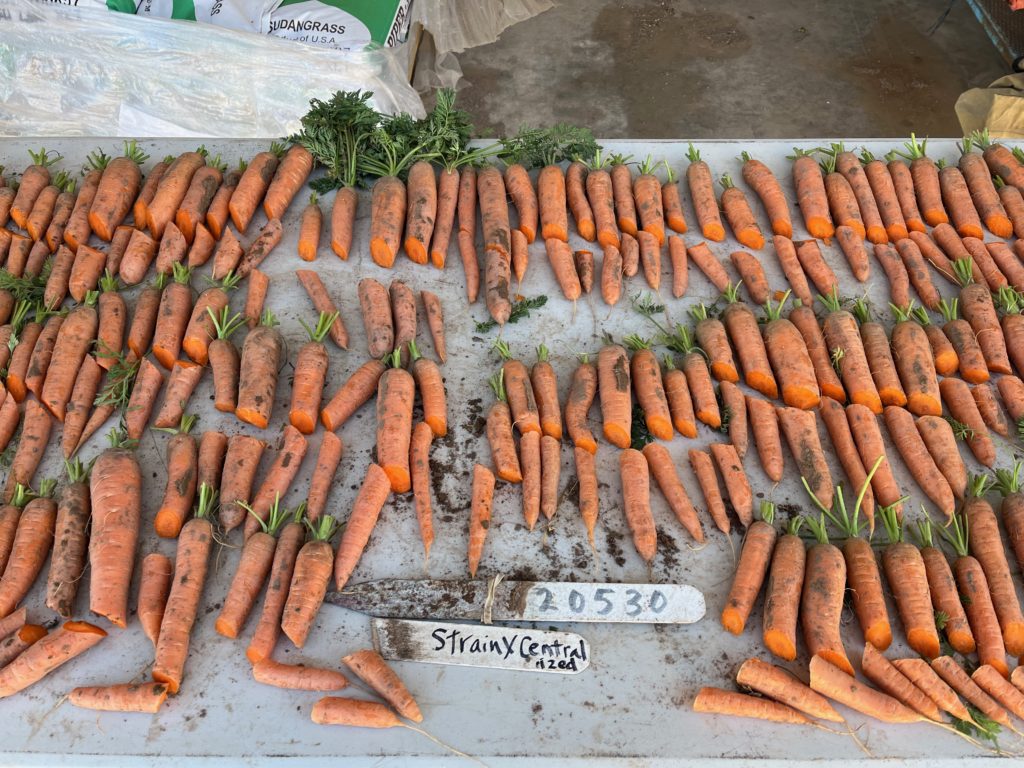
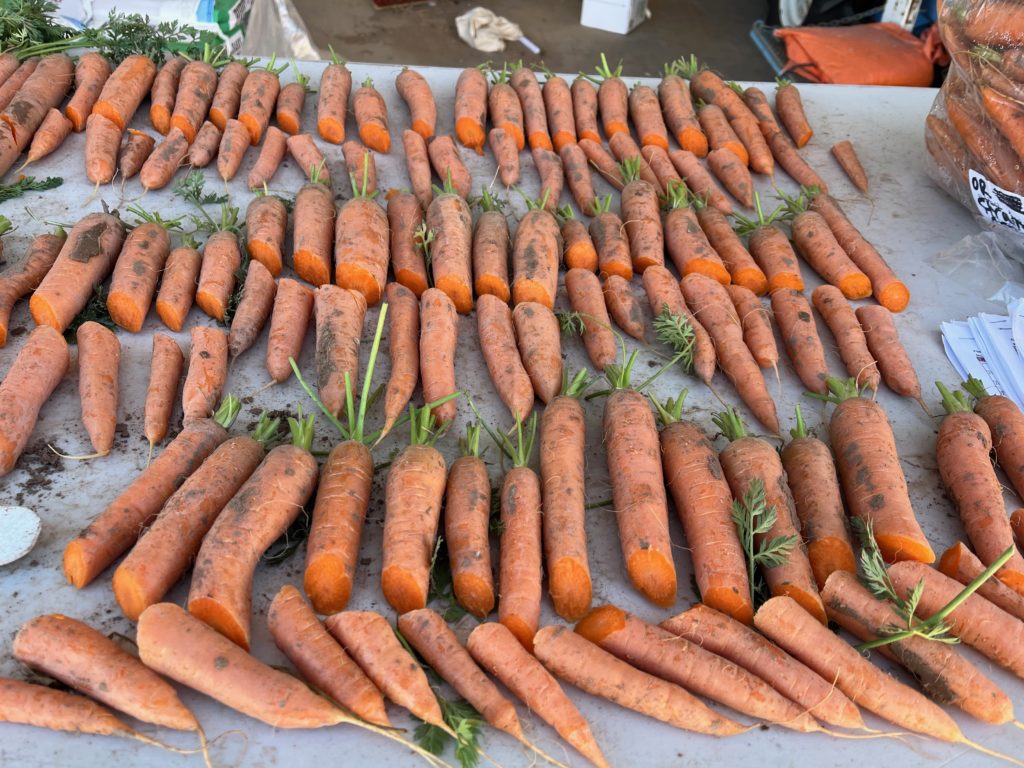
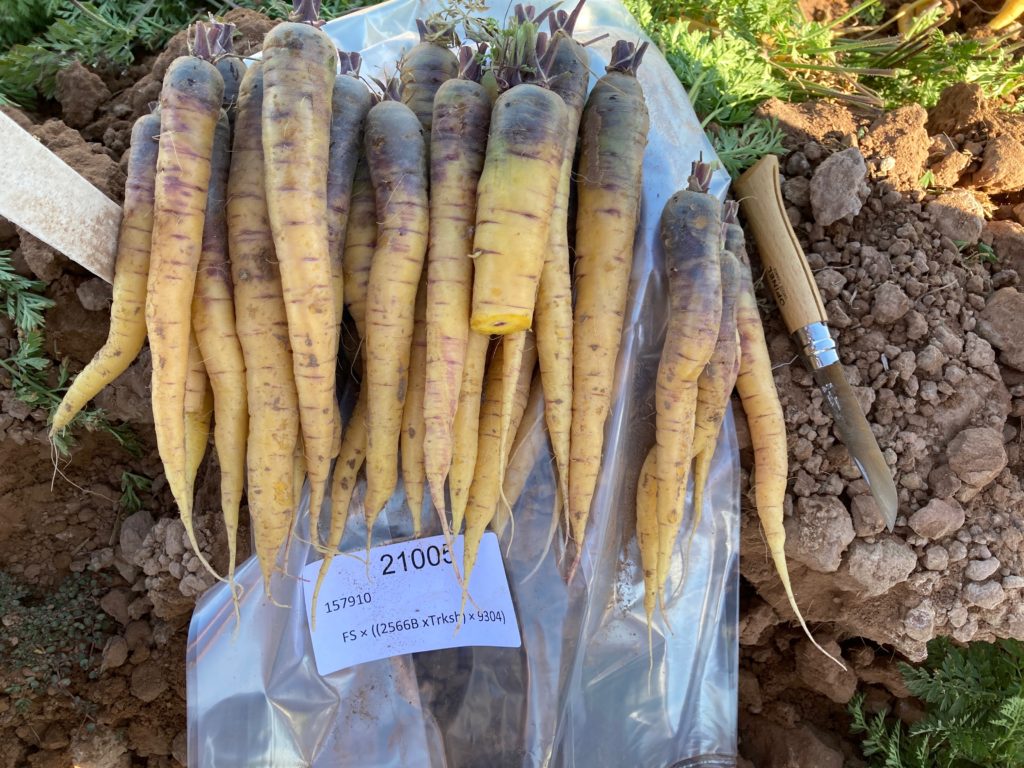
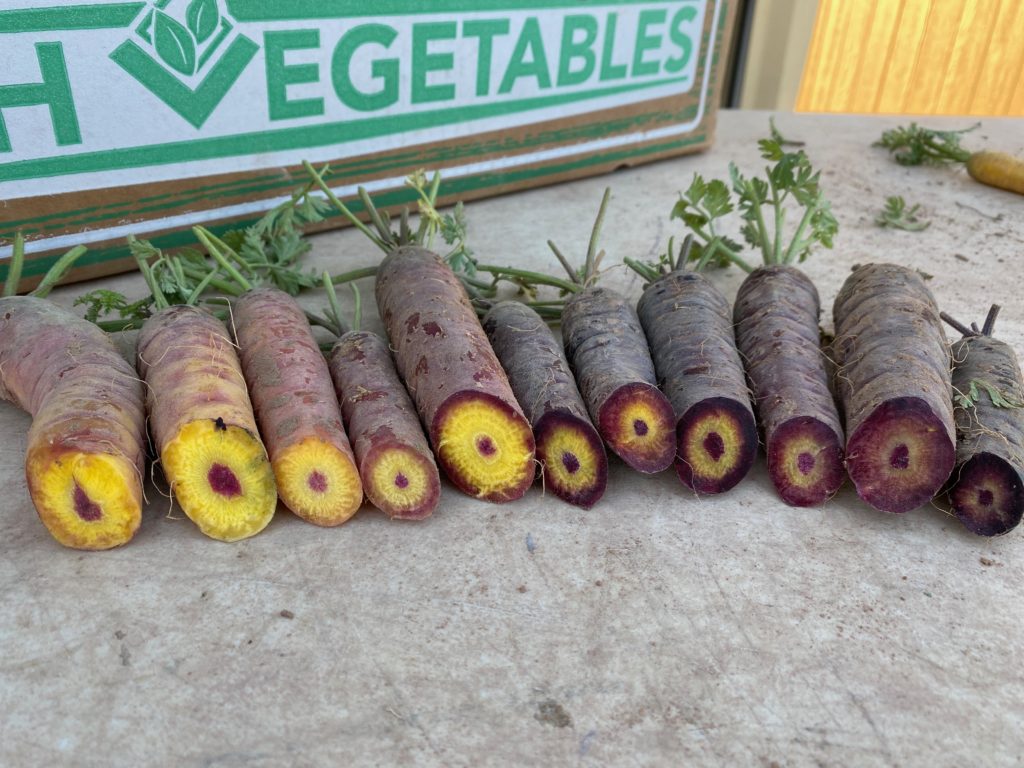
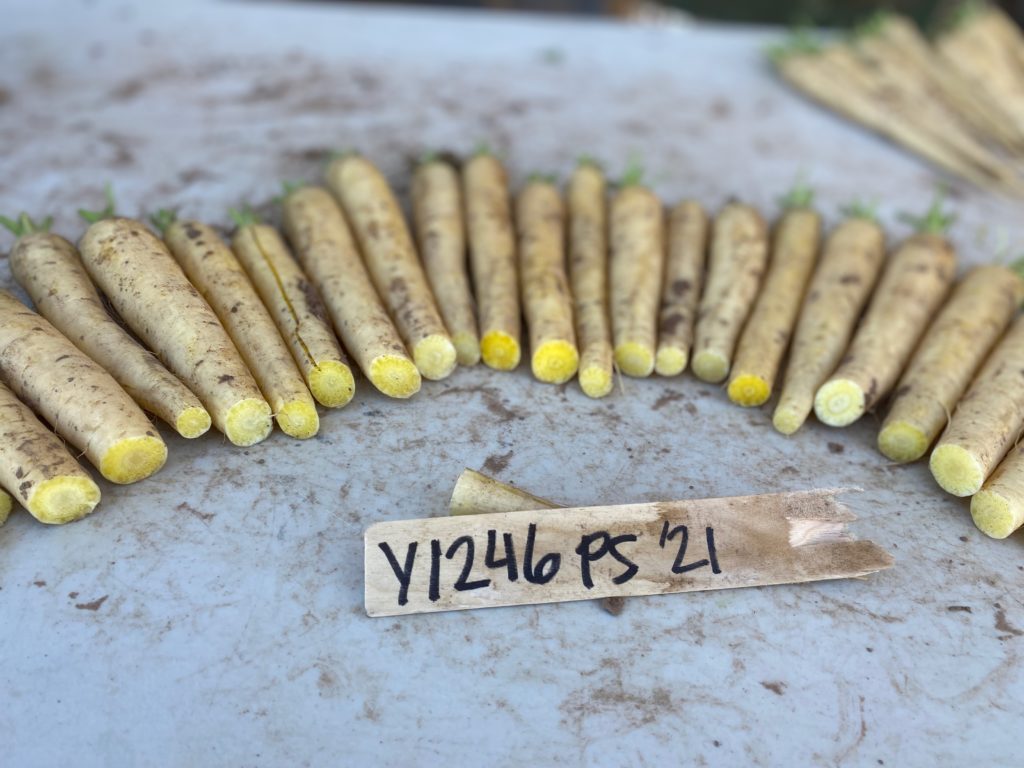
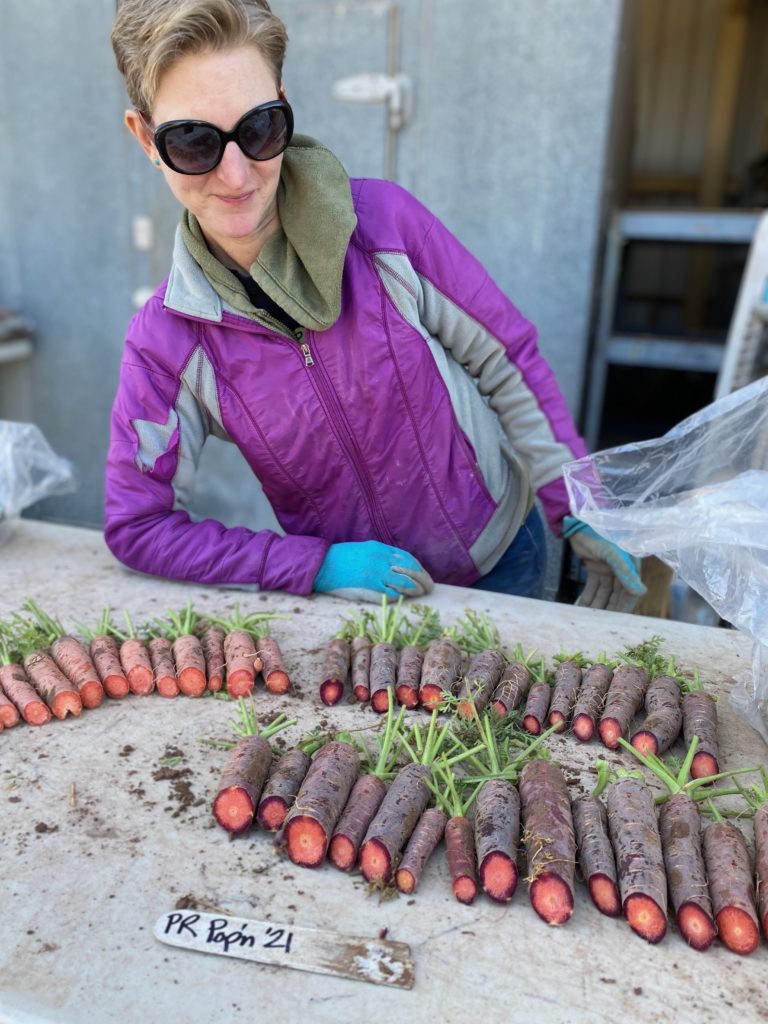
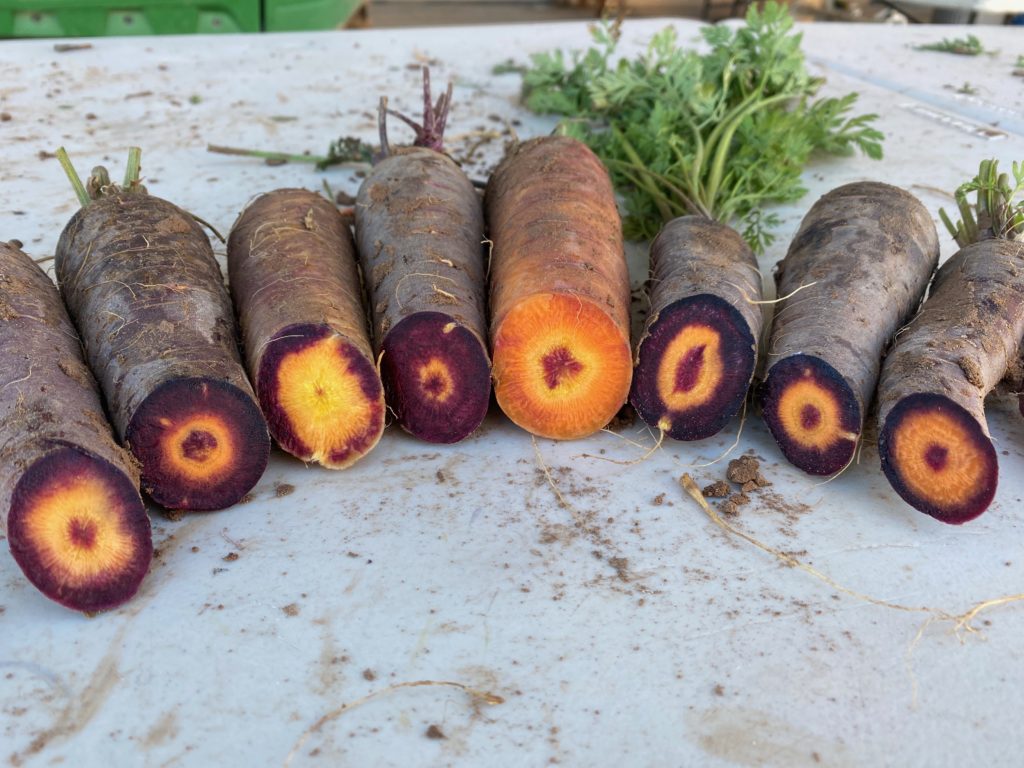
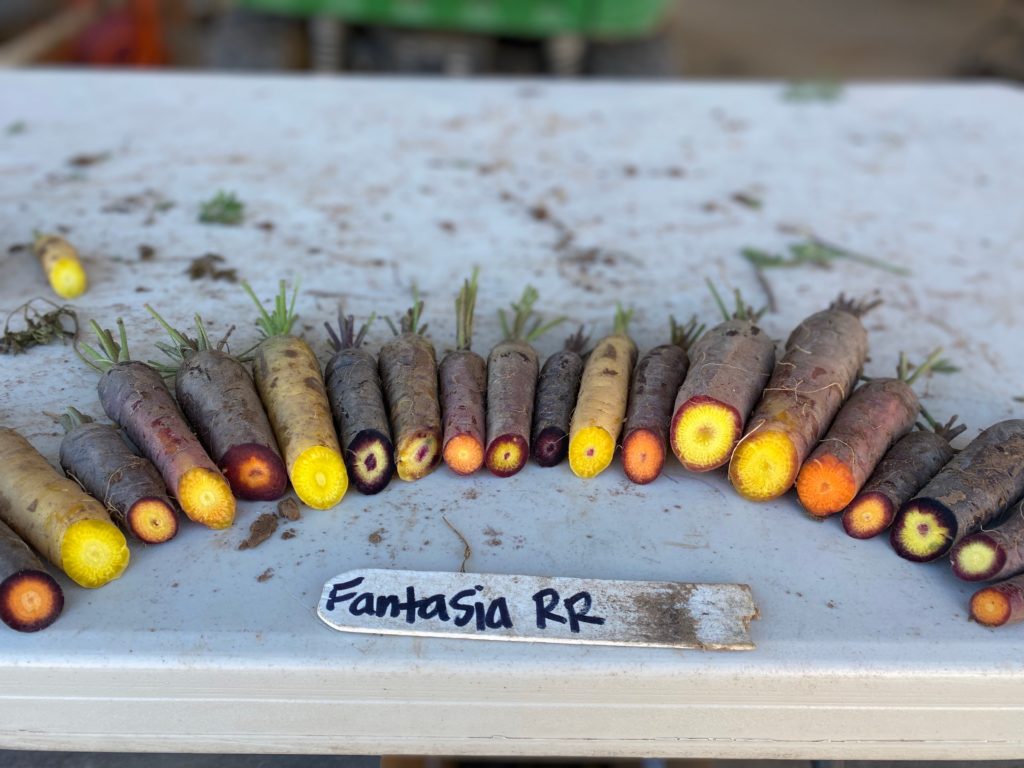
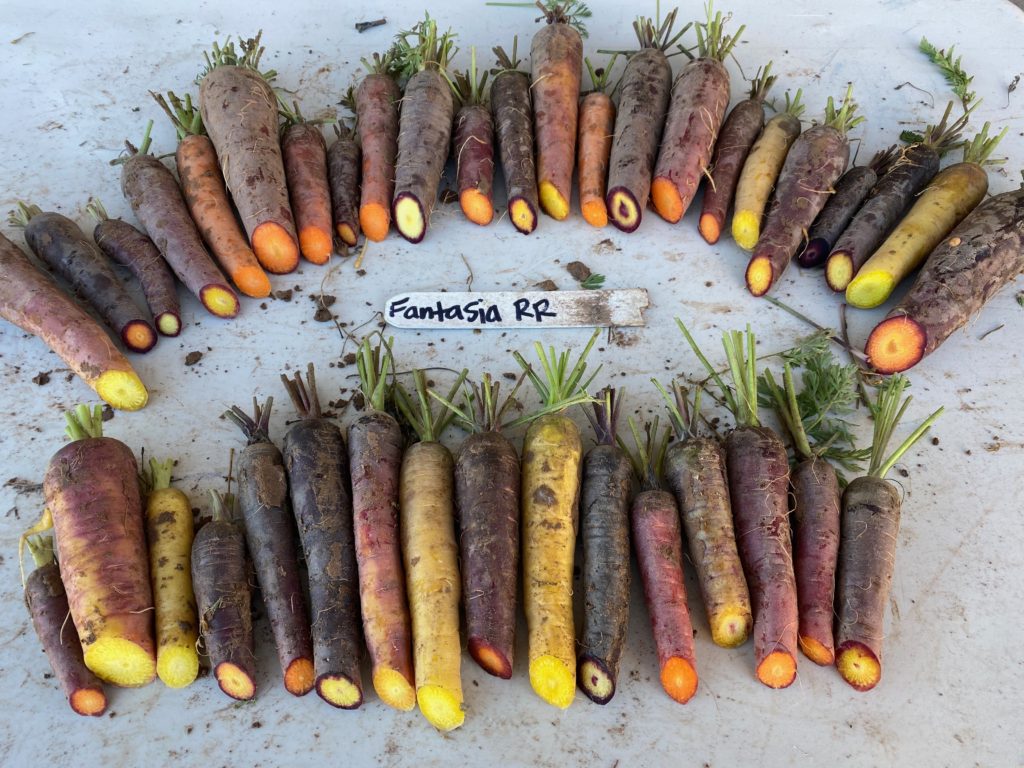
This project was funded by the Organic Research and Extension Initiative grant, part of the USDA National Institute of Food and Agriculture. Award # 2021-51300-34900: Carrot Improvement for Organic Agriculture: Leveraging On-Farm and Below Ground Networks.
